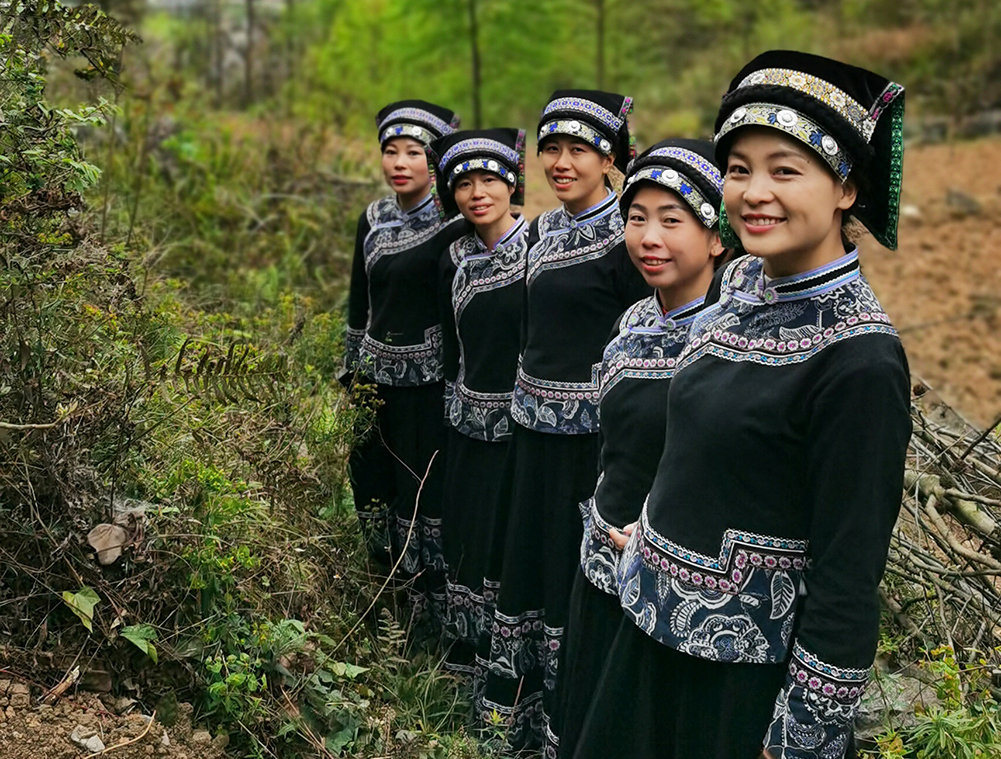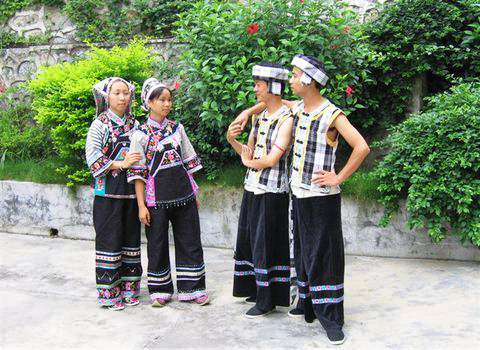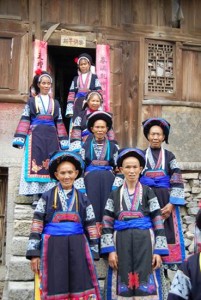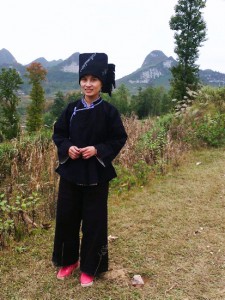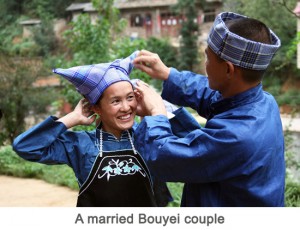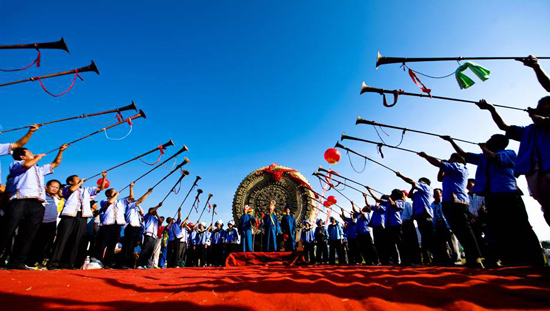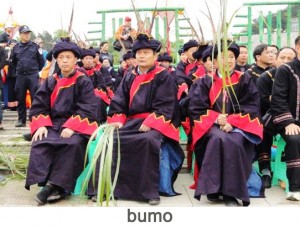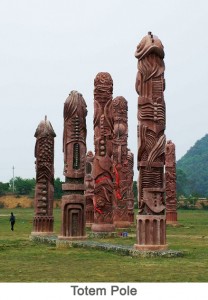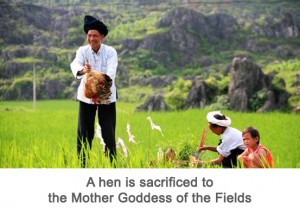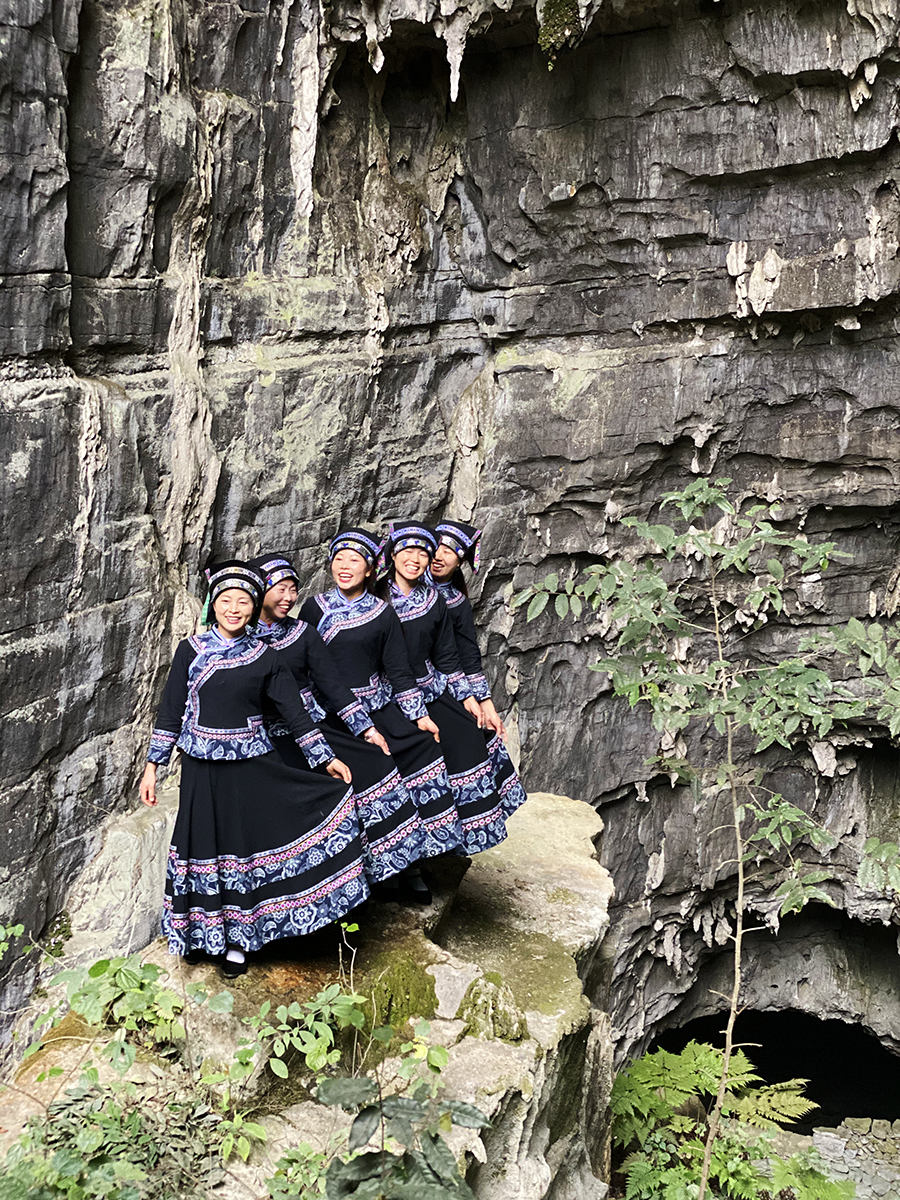
From fairy tales and fables to folk songs and poems, the Bouyei are well-known for their rich tapestry of literature. Their works have been passed down orally for hundreds of years and contain invaluable information about their religion, customs, culture, and history. These stories go by fanciful names, such as “Killing Tigers and Shooting Eagles”, “Legend of the Huangguoshu Waterfall” and the undeniably curious “Fight with the Rhinoceros over the Pearl”. What a rhinoceros would want with a pearl we do not know, but what we do know is that this plethora of literary work has helped inform their unique style of singing, dancing and opera.
Their folk songs can be split into two categories: big songs and small songs. Big songs are those sung at funerals and weddings while small songs are usually sung at festivals or when serenading a lover. Supposedly there are so many songs in the Bouyei canon that they could sing for 7 days straight without ever repeating one! Singing competitions are a popular form of entertainment during festivals and can involve dozens of singers from both genders, who sing musical dialogue in an antiphonal style.
Their fondness for singing has stretched into a deep love of opera and they even have their own style, known as Bouyei Opera, as well as practising other styles such as the Ground Opera and the Stool Opera. Bouyei Opera is over 200 years old and is more of an umbrella term for all native operas of the Bouyei people. It originated from a style of singing where the performer would use only eight tones and sit on a stool. As riveting as watching someone sing on a stool must be, the Bouyei soon developed the practice and it finally took shape as a true opera form during the Qing Dynasty (1644-1912). Nowadays Bouyei opera troupes are about 30 people strong and consist of the main actors, main actresses, and stock characters such as kings and warriors.
All of the singing, monologues and dialogues are performed in the Bouyei language but the prologue, final poem, and self-introductions will be done in Chinese. The content of these operas draws from the Bouyei’s rich mythology and features many of the Bouyei’s legends, as well as transplanting stories from the history of the Han people. Before the opera begins, the performers will join in a ceremony to honour the God of Opera and then sweep the stage meticulously.
It is a heavily stylised form of opera and there are certain conventions that must be adhered to, such as officials must always wave fans and warriors must carry a sword. Fortunately there are no warrior officials, or the performers would all be dodging a waving sword! The make-up used is minimal while the costumes depend on the content of opera. For example, Bouyei legends necessitate wearing traditional dress while stories of Chinese history require outfits that imitate ancient Chinese dress.
The Ground Opera received its unusual name because unsurprisingly it’s performed on the ground, with no stage or backdrop. Opera troupes are formed solely of local farmers from one village and these small groups only perform during slack farming seasons. After all, singing won’t pay the bills! The costumes for this style of opera are opulent and beautifully designed. Warriors wear a headdress made of chicken feathers and have small flags jutting out of their backs. Many of the performers will wear specially carved wooden masks while others will have vivid beards painted on their faces.
This style of opera is sung exclusively in the Bouyei language and the stories are normally adapted from historical fiction, such as “Talking about the Tang Dynasty” and “The Warriors of the Yang Family”. It is sometimes referred to as Nuo Opera because it is believed to have originated from the ancient Nuo people, making it a “living fossil” of operatic art!
The Bouyei are also known for several styles of dance, including the Weaving Dance, which is meant to imitate a Bouyei girl’s diligence while working, and the Dragon Lantern Dance, which is intended to express their reverence for dragons. All of their singing, dancing, and opera performances will be accompanied by instruments such as the suona, the xiao, the yueqin, and the bronze drum, as they are accomplished musicians.
